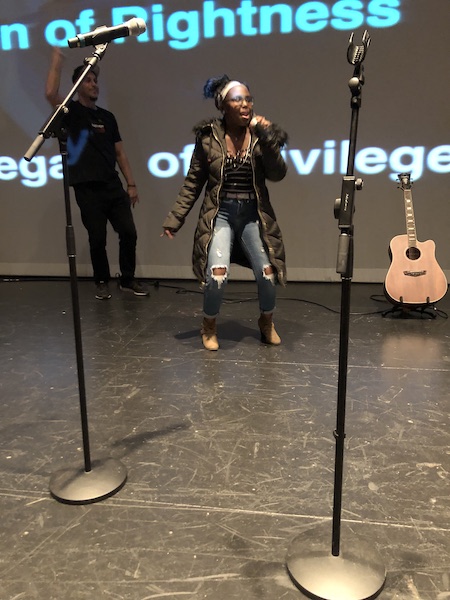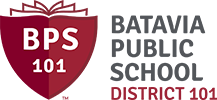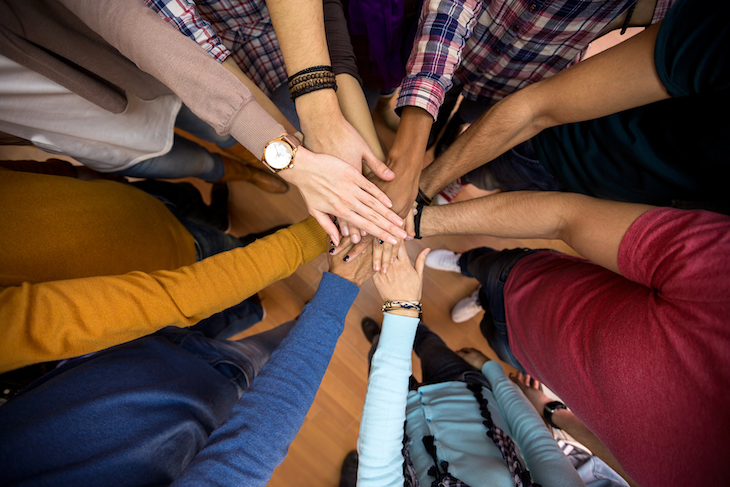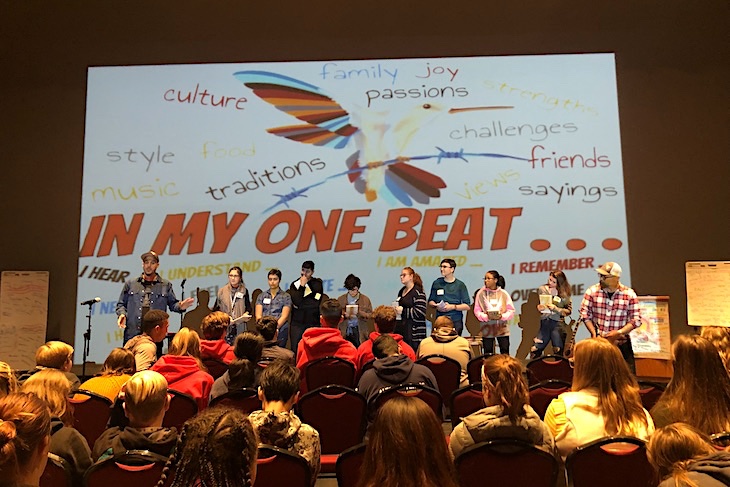Inspiring Students and Staff to be Youth Equity Stewards
“Equity,” “diversity,” and “inclusion” are terms said and read frequently these days, but what do they really mean for BPS101 students and staff members—especially those who may feel left out or less than?
“One of the major priorities of BPS101 is to provide an equitable and supportive learning environment for all students, regardless of race, class, or other personal characteristics,” said BPS101 Superintendent Dr. Lisa Hichens. “This work is complex, but vitally important to help our students feel welcome and psychologically safe at school. BPS101 is building a multi-year plan and using a number of outside resources to make sure the work is research-based and effective.”
As part of this plan, a diverse group of Rotolo Middle School and Batavia High School students and staff members came together for a “Youth Equity Stewardship” (YES) program this school year to help build a culture inclusive for all, and for participating students and staff to become change agents to reinforce this culture.
Key components of the YES program are …
- An experiential, arts-based process focused on engaging youth and adults as advocates for building soulful, inspired and inclusive learning environments.
- An opportunity to gain the youth perspective and a wider diversity lens for recognizing and eliminating educational disparities.
- A mindset centered on growing empathy at the personal and organizational levels.
- A model that builds leadership capacity and multi-generational collaboration to support authentic school improvement efforts.
To bring these components to life, the YES facilitators had students and staff participate in several individual, interactive small- and large-group, and reflective activities.

Connecting through music, art, and written words played a big part in the Youth Equity Stewardship training at the Batavia Fine Arts Centre.
“I think the training had a big impact. At first I wasn’t sure if the students were relating to the process, but their responses at the end of the initial two-day training made me realize that they very much understood the significance of building a healthy community across our differences and commonalities,” said Cara Schuster, Rotolo Middle School reading teacher, and YES training participant. “The approach to the training was one that involved a lot of reflection on our individual perspectives, which does take time. The training also provided a variety of activities to bring those perspectives out into the open for discussion. Reflecting and trying to understand a variety of perspectives as they are presented in the form of music, art, and the written word is the heart of the Youth Equity Stewardship.”
Artavion Taylor, a junior at Batavia High School, was part of the training and said it has helped him connect with peers on a whole different level.
“It’s opened my mind to see things from others’ perspectives and provided an area where everyone could express their ideas and what they were thinking and not have to worry about people judging them,” said Artavion. “I feel like I’m now less stressed and more motivated for school. Less stressed because I have a better understanding of people around me.”
One of the big surprises to the adults who participated in the training was how many students stepped up into leadership roles over the two-day experience—especially students who tend to be quieter in the classroom.
“I was very impressed with our student body. Kids that you would think not offer up answers were leading the discussions. They had outstanding insights,” said William Colamatteo, BHS PE teacher.
One area of work from the training was to provide staff with the training needed to build a culture that is inclusive for all students. Part of that included having staff members step out of supervisorial roles and blend right in with the students.
“Students were able to see us in a different light. Not up in front of a classroom, but right there with them. They were able to see that teachers do understand them. We’re not just old people,” said BHS Math Teacher Mike Theriault. “One thing I realized is that the students stress out about the same things I stressed out about at that age. Where am I going to go to college? Will I get accepted into college? What do my parents think?”
BHS junior Marian Vazquez was surprised when she heard adults introduce themselves by their first names.
“The teachers were there just like another student. I really enjoyed that! The speaker asked the teachers to share their name and the type of music they liked. It was weird, but cool to hear teachers say their first names.”
A big takeaway for Justin Allison, Batavia High School social studies teacher, is the use of the word “stewardship” vs. “leadership.”
“I’ve now incorporated this into my language. The concept of a leader is more top down. A steward is, ‘Hey, we’re all in this together,’” he explained. “This philosophy helps students look at their responsibilities not just in the classroom, but also in the community and gives them ownership. They have a voice and opinions, can be confident in adult conversations … and make a difference.”
A big takeaway for Mr. Colamatteo was when heard two differing opinions on the question, “What makes Batavia unique?”
“Kids were saying, ‘It’s a small community. We all grew up together. Some of us have been together since kindergarten or middle school.’ And then we heard the flip side from kids who moved in saying, ‘It’s been tough for me to fit in with groups because I just moved here and the kids already have their set of friends.’ I really had not thought how this tight-knit community may feel to a new student. Now, when I have someone new in class, I’ll work that much harder to help them get involved and introduce them to others to be more comfortable.”
What’s Next
YES program participants will be involved in a follow-up training session in April to transition from learning to applying concepts in their own environments. The April session will also focus on having students address real challenges within their school environment and become leaders of social change in school. Participants will also be developing a plan of action that fosters intergenerational collaboration.
“It has been sheer providence that I have had the opportunity to receive equity training. The training I received on accepting differences and searching for commonalities between us is directly aligned with our upcoming ‘One Book, One RMS’ initiative,” said Mrs. Schuster. “The one book all students and staff will be reading over the summer is titled, ‘I Will Always Write Back,’ and is the story of two unlikely friends who met by being penpals. One is from the United States and the other is from Zimbabwe. We are hoping to tie in the Youth Equity Stewards from RMS into the different activities surrounding our one book. ‘I Will Always Write Back’ provides a good example of differing perspectives and how people can reflect and attempt to understand these perspectives for the betterment of a community and the world. I think our YES team will be able to keep the conversations going at RMS and have a positive impact on the entire RMS population.”





